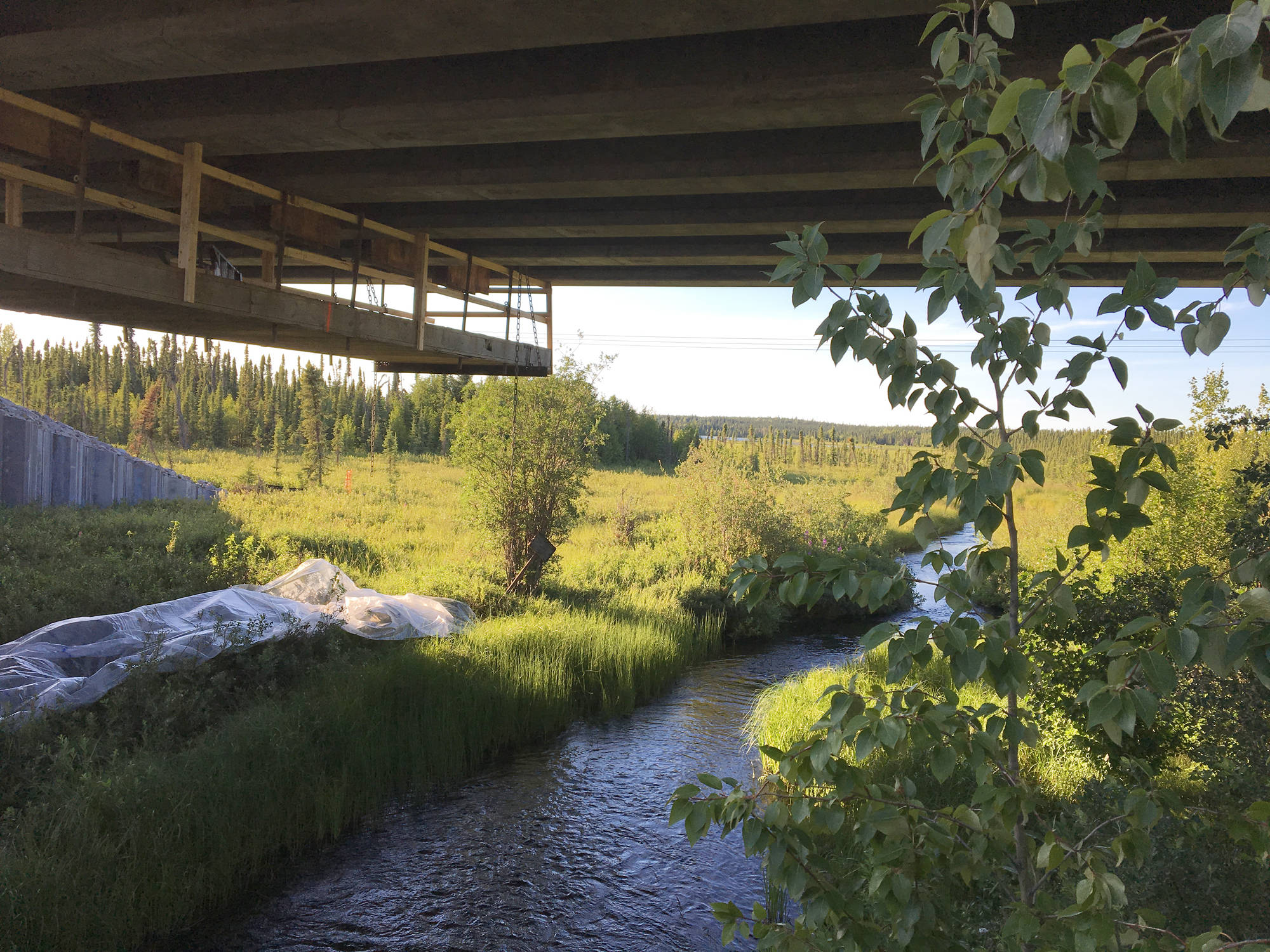By JOHN MORTON
Why do moose cross the road? To get to the other side, of course — as do other wildlife like lynx, caribou, bears and wolves. The nature of the beast is that dens and calving areas and salmon and hardwood browse and berries don’t all occur in the same place. Here on the Kenai National Wildlife Refuge, it seems reasonable that we like wildlife to move freely around to access these sometimes patchily-distributed resources.
The problem is that it’s not that simple. Almost 1.4 million vehicles per year travel down the Milepost 58 to 79 section of the Sterling Highway that bisects the Refuge between Jim’s Landing and Sterling. That traffic volume translates to a vehicle every 22 seconds, making this a formidable (albeit moving) barrier to wildlife like wolves and bears that tend to avoid traffic. For animals like moose that are sometimes attracted to the roadside hardwood browse, road salts or plowed roadways, this translates to 225 to 250 collisions with vehicles annually on the Kenai Peninsula, 90 percent of which are cows and calves. This mortality approximates the number of moose (mostly bulls) legally harvested on the peninsula every year!
In addition to this waste of meat and hunting opportunity, moose-vehicle collisions average $36,000 in vehicle damage, lost wages and towing, medical and investigation costs. That’s $9 million per year! And sometimes people die, for which there is no price tag.
Needless to say, the Refuge is just as interested in public safety as it is in ensuring wildlife movement. The answer clearly isn’t to prevent moose from crossing the highway. Thomas McDonough and Sean Farley, two local biologists with the Alaska Department of Fish and Game, coauthored a 2015 journal article in which their research showed that moose populations in Anchorage were genetically different on either side of the Glenn Highway because of the restricted gene flow (movement) caused by fencing and heavy traffic. While they didn’t find any detectable effect due to the Sterling Highway, it’s clear that this is a looming issue as traffic volumes increase on the Kenai Peninsula.
Instead, the Refuge worked closely with an Alaska Department of Transportation & Public Facilities (DOT&PF) planning team to develop six underpasses for wildlife passage on this 21-mile section of the Sterling Highway. Perhaps the most noticeable underpass is the new bridge over the East Fork of the Moose River. This almost-140-foot bridge will provide a 104-foot wide by 18-foot high opening for moose and the Kenai Lowland caribou herd, eventually replacing the small culvert and very high road bed that currently exists there.
The other five underpasses are large culverts ranging in height from eight feet for bears and lynx to twin culverts for moose, each 16 feet high. This latter structure anchors the west end of 1.5 miles of fencing on either side of the highway section that runs between there and the new East Fork bridge. This area is known to have a high moose-vehicle collision rate, in part because moose travel there, but also because of a large bend in the highway near Lily Lake that hides crossing moose until the last second.
We’ve made every effort to ensure this fence is porous to other wildlife. It’s eight feet high to stop moose, but it starts one foot off the ground so smaller wildlife can pass under. In addition, 22 “jump-outs” are being installed every eighth of a mile to allow moose that might accidentally walk around the fence to escape. These are dirt ramps that lead up to large gaps in the fence that allow moose to step through and away from the road corridor, but don’t allow moose to return because of a seven-foot vertical drop.
Will wildlife use these underpasses? We already know that overpasses are a better design for moose and caribou. Unfortunately, the cost of overpasses were more than this particular project could afford, but we have ensured that the culverts are as high and as short as they can be to minimize the “tunnel” effect. All but one of the structures pass under two lanes, and they have all been placed in areas of frequent wildlife crossings based on GPS collar data from moose and caribou, moose vehicle collision reports and wildlife observations.
As these structures are new for Alaska, we’ll be monitoring their use by wildlife for several years after construction. We fully expect moose and other wildlife to still cross over open pavement, but our interagency goal is to reduce those opportunities for vehicle collisions as much as possible. The Refuge’s goal is to ensure that widening of the road to allow for passing lanes and a wider shoulder doesn’t restrict wildlife movement.
This project will have other tangible benefits that those who use the Kenai Refuge will appreciate when the construction dust settles next year. A pedestrian underpass will connect the parking lot for the Skyline Trail with its trailhead on the other side of the road. The gravel pit at MP 63.5, an open wound on the landscape for several decades, will finally be remediated. The access to Mystery Creek Road will be realigned to make it safer and to provide public parking. And this is the first DOT&PF project in Alaska to use certified weed-free gravel.
Why moose cross the road is no surprise. But the “how” is perhaps the more interesting question. We should find out over the next few years!
Dr. John Morton is the supervisory biologist at Kenai National Wildlife Refuge. Find more Refuge Notebook articles (1999-present) at https://www.fws.gov/Refuge/Kenai/community/Refuge_notebook.html
• By JOHN MORTON, For the Peninsula Clarion

